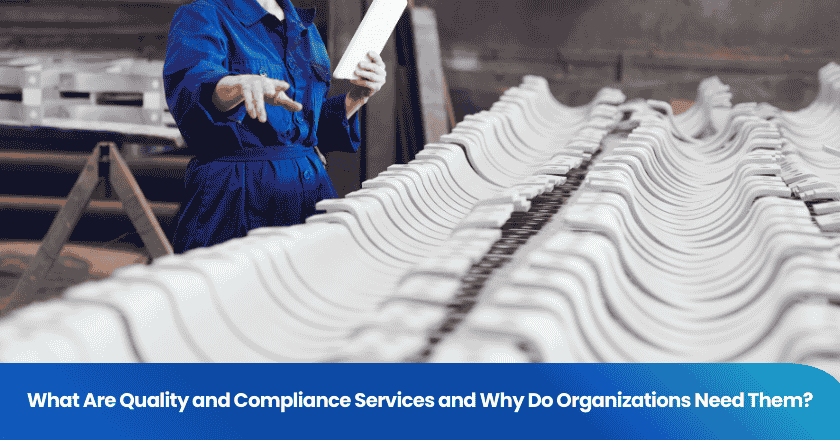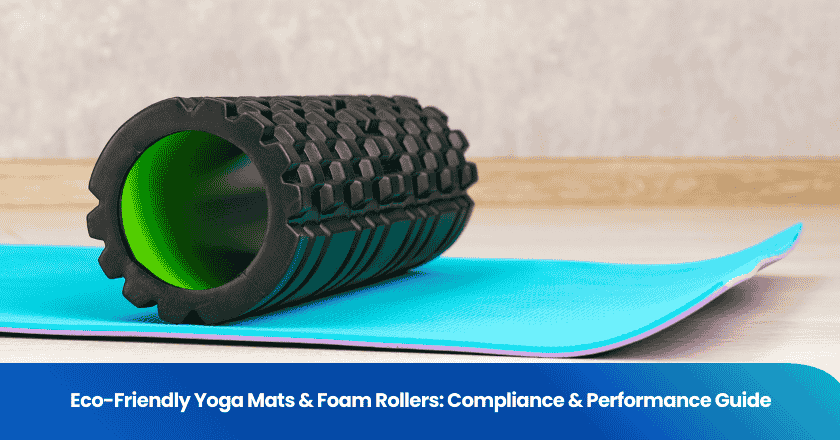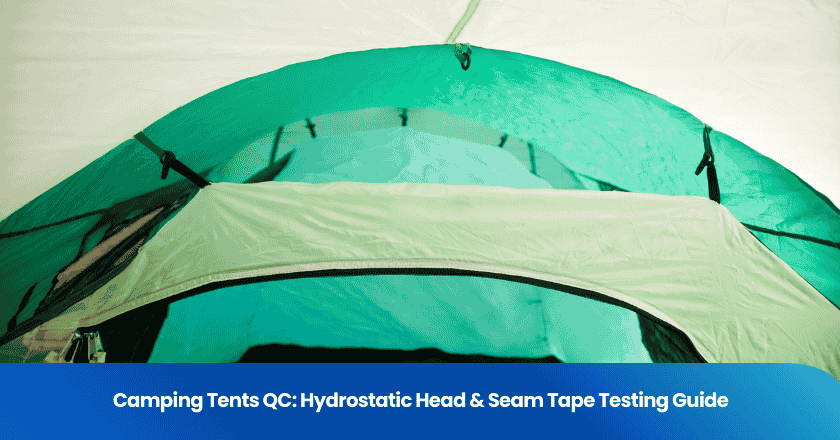
Rely on quality and compliance services to meet rising regulatory demands and strengthen your operational standards. As organizations worldwide adopt ISO standards and integrated compliance systems, you experience greater risk reduction, legal protection, and improved efficiency.
| Aspect | Compliance | Quality Assurance |
|---|---|---|
| Legal Requirements | Adheres to specific legal and regulatory mandates | Ensures products/services meet quality standards |
| Operational Impact | Requires collaboration and documentation for audits | Focuses on process improvement and defect prevention |
These services help you prevent defects, streamline processes, and protect your reputation as technology and regulations evolve.
Key Takeaways
- Quality and compliance services help organizations meet legal requirements and improve operational standards.
- Implementing quality assurance reduces defects and enhances customer satisfaction, leading to cost savings.
- Compliance protects organizations from legal penalties and reputational damage by ensuring adherence to regulations.
- Integrating quality and compliance services boosts efficiency, streamlines processes, and fosters a culture of continuous improvement.
- Prioritizing quality and compliance builds trust with stakeholders and gives organizations a competitive edge in the market.
Quality and Compliance Services
Quality Assurance
You rely on quality assurance to maintain high standards throughout your organization. Quality assurance systems help you prevent defects and ensure that every product or service meets established requirements. In regulated industries, you must align your quality assurance process with strict regulations and industry standards. This approach covers the entire lifecycle of a product, from initial design to post-market monitoring. You benefit from several types of quality assurance, each serving a unique purpose:
- Functional Quality Assurance
- Process Quality Assurance
- Software Quality Assurance (SQA)
- Regulatory Compliance Quality Assurance
- Supplier Quality Assurance
- Product Quality Assurance
Quality assurance focuses on improving internal processes. You use regulatory frameworks, internal policies, and external audits to verify that your operations meet all necessary standards. When you implement a robust quality assurance process, you reduce the risk of defects and enhance customer satisfaction. For example, Toyota’s commitment to total quality control empowered employees to take responsibility for quality. This led to fewer recalls and higher reliability, demonstrating how effective quality assurance can deliver better products and substantial cost savings.
Tip: You can allocate more resources to innovation and profitable projects when you minimize defective products through quality assurance.
Compliance
Compliance ensures that your organization adheres to external regulations and industry standards. You must follow legal requirements that govern your sector, such as healthcare or finance. These regulations protect consumers, safeguard sensitive data, and maintain ethical business practices. In healthcare, you need to meet standards set by the Centers for Medicare & Medicaid Services (CMS) and comply with the Health Insurance Portability and Accountability Act (HIPAA). State and local regulations also play a significant role, covering licensure and facility requirements.
You manage compliance by establishing clear policies and procedures. You educate employees about their responsibilities and monitor adherence through regular audits. You report and resolve incidents promptly to avoid regulatory penalties. Compliance services help you identify vulnerabilities, assess risks, and respond to regulatory changes and updates. By maintaining compliance, you protect your organization from fines, legal action, and reputational damage.
Key Differences
Quality assurance and compliance share a common goal: ensuring your organization meets high standards and regulations. However, they differ in focus and execution. Quality assurance centers on internal processes and defect prevention. You use quality assurance to improve operations and deliver consistent products. Compliance, on the other hand, addresses external requirements. You follow regulations and standards to meet legal and contractual obligations.
| Aspect | Quality Assurance | Compliance |
|---|---|---|
| Focus | Internal processes and defect prevention | Adherence to external regulations and standards |
| Goal | Enhance product/service quality | Meet legal and regulatory requirements |
| Methods | Audits, process improvement, employee empowerment | Policies, training, monitoring, reporting |
You achieve operational efficiency and customer satisfaction when you integrate quality and compliance services. Quality assurance helps you prevent defects and improve products, while compliance ensures you meet all regulatory requirements. Together, these services support your organizational goals by delivering consistent quality, maintaining legal protection, and adapting to regulatory changes and updates.
Functions
Workplace Compliance
You play a vital role in maintaining workplace compliance across your organization. This process involves meeting legal and regulatory requirements that protect both your employees and your business. In manufacturing and service industries, you must address several workplace compliance requirements:
| Compliance Requirement | Description |
|---|---|
| Manufacturing Compliance | Ensures adherence to regulatory requirements, industry standards, and internal quality controls in the production process. |
| GDPR | Protects personal data of EU residents, applicable to entities processing such data. |
| HIPAA | Requires protection of individuals' health information by covered health entities. |
You implement workplace compliance programs to enhance employee safety. These programs include structured safety measures, regular training, and thorough documentation. By identifying hazards and fostering a safety culture, you reduce organizational liability and create a safer environment for everyone.
Quality Management
You rely on quality management to deliver consistent results and meet customer expectations. A successful quality management system includes several key components:
1. Quality planning sets clear goals and strategies.
2. Quality assurance ensures products meet standards.
3. Continuous improvement drives ongoing enhancements.
4. Customer focus keeps your efforts aligned with client needs.
Quality management improves product consistency and customer satisfaction. You achieve this by maintaining uniform quality, resolving problems quickly, and providing a better user experience. When you prioritize quality management, you build trust and loyalty with your customers.
Note: Documenting your quality management activities helps you track progress, identify trends, and make informed decisions.
Service Lifecycle
You manage the service lifecycle to ensure your quality management and compliance efforts remain effective. The service lifecycle includes several stages:
| Stage | Objective |
|---|---|
| Service Identification | Identify and plan services that support business goals. |
| Service Design | Align service design with technical and business requirements. |
| Service Development | Build services according to specifications. |
| Service Testing | Test for functionality, performance, and compliance. |
| Service Deployment | Deploy services with minimal disruption. |
| Service Monitoring | Track performance and address issues in real time. |
| Service Evolution | Update services as business needs change. |
| Service Decommissioning | Retire services when no longer needed, ensuring proper documentation and compliance. |
Managing the service lifecycle improves data visibility, productivity, and consistency. You benefit from automation, real-time tracking, and centralized data, which lead to faster responses, better resource use, and higher customer satisfaction.
Why Organizations Need Them
Legal Protection
You face a complex landscape of legal obligations in today's business environment. Quality and compliance services help you navigate these requirements and shield your organization from lawsuits and fines. Regulatory frameworks in both the European Union and the United States demand strict adherence to safety, data protection and privacy, and product standards. The following table highlights some of the most important regulations you must consider:
| Regulation | Description |
|---|---|
| Occupational Safety and Health Administration (OSHA) | Ensures safe working conditions by establishing standards and conducting inspections. |
| General Product Safety Regulation (GPSR) | Mandates safety standards for consumer products in the EU, effective June 2023. |
| Consumer Product Safety Act (CPSA) | Protects consumers from dangerous products through established safety standards. |
| REACH | Requires industries to manage chemical risks and provide safety information. |
| Health Insurance Portability and Accountability Act (HIPAA) | Protects patient health information in the U.S. healthcare system. |
| General Data Protection Regulation (GDPR) | Governs the collection and processing of personal data in the EU. |
You protect your business, your team, and your clients by implementing robust compliance programs. These programs help you avoid penalties and legal exposure. When you prioritize compliance, you demonstrate responsibility and build trust with stakeholders. You also ensure employee protection by meeting workplace safety standards and maintaining secure environments.
Note: Compliance excellence transforms regulatory constraints into genuine competitive advantages. You gain enhanced stakeholder trust and reduce operational interruptions.
Risk Mitigation
You encounter risks every day, from operational errors to data breaches. Quality and compliance services provide a structured approach to risk management and risk mitigation. You identify potential threats, assess their impact, and implement controls to prevent losses. The following table outlines common strategies you can use:
| Strategy Type | Description | Example |
|---|---|---|
| Risk Avoidance | Eliminating exposure to a risk factor that could cause a loss. | Halting construction during a storm to protect workers. |
| Loss Prevention | Efforts to reduce and prevent losses such as operational errors, fraud, or theft. | Installing surveillance cameras and conducting regular audits. |
| Loss Reduction | Limiting the extent of a loss that may occur. | Installing sprinkler systems in warehouses to mitigate fire damage. |
| Risk Separation | Limiting risk exposure across multiple locations to reduce overall severity. | Employing a geographically diverse workforce to ensure production continuity. |
| Control Register | A record of controls for each risk, ensuring they are operational and effective. | Using multiple theft prevention measures like CCTV and security guards in retail stores. |
| GRC Software | Tools to track risk controls and their effectiveness, aiding in regulatory compliance and decision-making. | Utilizing GRC software for digital tracking of risk controls and reporting to stakeholders. |
You use structured processes for vendor management and ongoing governance to maintain high standards throughout the product lifecycle. Proactive audit processes and remediation teams help you identify and address risks before they escalate. You also strengthen data protection and privacy by following regulations such as GDPR and HIPAA. These efforts lower risk management costs and create more predictable financial performance.
- Quality and compliance services ensure you meet legal obligations and ethical standards.
- You build a responsible business environment by promoting transparency, accuracy, and honesty in reporting.
- You foster integrity and long-term relationships with business partners, reflecting a commitment to sustainability.
Reputation
You know that reputation is one of your most valuable assets. Quality and compliance services protect your brand and build customer trust. When you follow ethical business practices and maintain transparency, you earn credibility in the marketplace. Accurate reporting and adherence to compliance standards show your dedication to reliability and global sustainability.
“A cautionary tale is Outcome Health, a tech startup. The business made headlines in 2024 when three former executives were convicted of scamming clients and investors out of $1 billion. By having a strong compliance program, companies can maintain their reputation with the public and with other business partners.”
You avoid reputational damage by preventing negative publicity and maintaining high standards. Customers and partners value organizations that prioritize data protection and privacy. You differentiate yourself in a competitive landscape by demonstrating accountability and ethical conduct. This commitment leads to increased customer confidence, loyalty, and business revenue.
- Quality and compliance services foster transparency and accountability.
- You build customer confidence and loyalty, which are essential for sustainable success.
- Proactive compliance helps you stand out, driving revenue growth through stronger customer relationships.
Benefits
Efficiency
You experience significant improvements in efficiency when you implement quality and compliance services. These systems help you identify bottlenecks and streamline workflows, making your daily operations smoother. You enhance collaboration by defining roles and responsibilities, which reduces confusion and increases productivity. Optimizing resource allocation allows you to use time, money, and workforce more effectively. You also minimize redundancies and errors, which leads to less downtime and waste.
| Aspect | How QMS helps |
|---|---|
| Process Improvement | Identifies bottlenecks and implements streamlined workflows. |
| Communication | Enhances collaboration by defining roles and responsibilities. |
| Resource Allocation | Optimizes the use of time, money, and workforce. |
| Error Reduction | Minimizes redundancies and errors, reducing downtime and waste. |
You track these improvements using key performance indicators, internal audits, management reviews, and customer feedback. Real-time data and analytics support informed decision-making and continuous improvement. This approach ensures you remain inspection-ready and fosters confidence among partners and investors.
Tip: Employ lean methodologies to remove inefficiencies and select tools that fit your organization's needs.
Financial Savings
You notice substantial financial savings after adopting quality and compliance services. Automating data collection minimizes human errors, which often lead to costly mistakes. You identify and reduce waste in manufacturing, lowering costs associated with scrap and rework. These savings can be reinvested or passed on to customers, enhancing your pricing strategies.
| Area of Savings | Description |
|---|---|
| Reduction of Errors | Automating data collection minimizes human errors that lead to costly mistakes. |
| Waste Minimization | Identifying and reducing waste in manufacturing lowers costs associated with scrap and rework. |
| Competitive Pricing | Savings can be reinvested or passed on to customers, enhancing pricing strategies. |
True quality-related costs can account for 15% to 20% of sales revenue. In some cases, these costs reach up to 40% of total operations. For growing companies, poor quality typically represents about 10% to 15% of operations. You avoid operational disruptions, loss of business opportunities, increased scrutiny from regulators, and reputational damage. Legal actions, including lawsuits, become less likely when you maintain compliance.
Competitive Edge
You gain a competitive edge by aligning with standards early and ensuring your products are market-ready. This proactive approach fosters internal alignment and reduces technical debt, allowing you to meet customer expectations from the start. You differentiate yourself by delivering consistent quality and adhering to regulatory requirements, which reduces errors and customer complaints.
| Benefit | Description |
|---|---|
| Quality and Consistency | Reduces errors and customer complaints through clearly defined quality standards. |
| Improved Compliance | Ensures adherence to legal and regulatory requirements, reducing risks and penalties. |
| Competitive Advantage | Differentiates organizations from competitors, enhancing reputation and opening new business opportunities. |
You establish credibility by committing to quality management standards and obtaining certifications. Healthcare organizations that prioritize compliance build patient trust and improve marketing efforts. You stand out in the marketplace by providing enhanced value and reliability.
You strengthen your organization by prioritizing quality and compliance services. Industry experts highlight several compelling reasons:
- Compliance builds trust among stakeholders and promotes fair competition.
- A balanced approach enhances operational efficiency and supports sustainable growth.
- Focusing on quality safeguards health and protects your reputation.
| Best Practice | Description |
|---|---|
| Give quality a vision | Align with long-term objectives and measure progress. |
| Support quality culture | Involve everyone in continuous improvement. |
Evaluate your current strategies, automate compliance where possible, and foster a culture of quality. These steps help you adapt to evolving regulations and maintain a competitive edge.
FAQ
What is the difference between quality assurance and compliance?
Quality assurance focuses on improving your internal processes and preventing defects. Compliance ensures you meet external regulations and legal standards. Both work together to protect your organization and maintain high standards.
How do quality and compliance services reduce risk?
You identify risks early and implement controls to prevent issues. Regular audits and monitoring help you catch problems before they escalate. This approach lowers your chances of legal penalties and operational disruptions.
Why should you invest in quality management systems?
Quality management systems help you deliver consistent products and services. You improve customer satisfaction and reduce errors. These systems also support continuous improvement and help you meet industry standards.
What happens if you ignore compliance requirements?
Ignoring compliance exposes you to fines, lawsuits, and reputational damage. You risk losing customer trust and facing operational shutdowns. Staying compliant protects your business and ensures long-term success.
How do these services impact your organization’s reputation?
You build trust with customers and partners by maintaining high standards and following regulations. Transparent practices and ethical conduct enhance your reputation. A strong reputation leads to increased loyalty and new business opportunities.
Grow your business with TradeAider Service
Click the button below to directly enter the TradeAider Service System. The simple steps from booking and payment to receiving reports are easy to operate.



